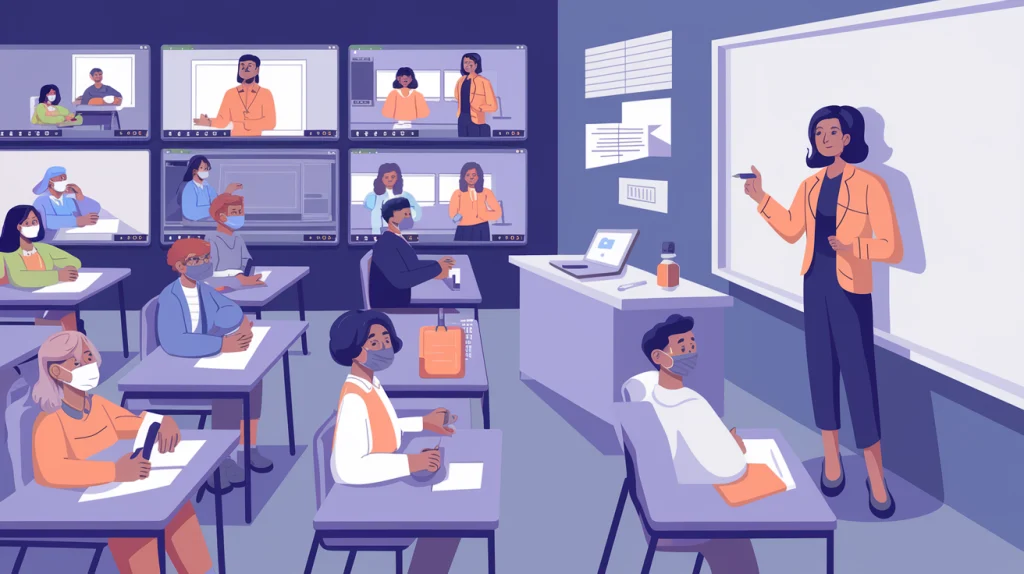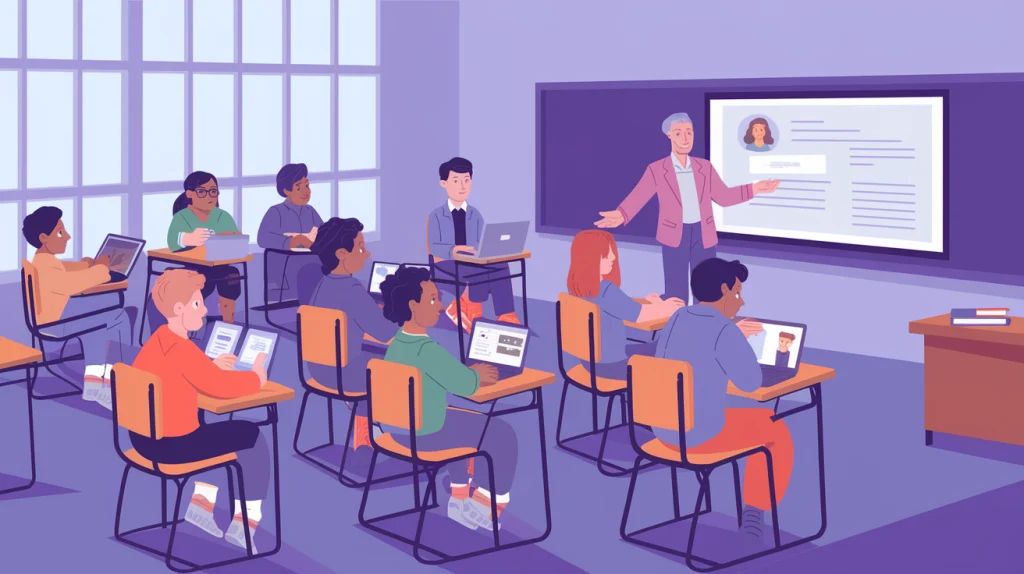Blended learning theory explores the integration of traditional classroom methods with digital learning tools to create a more flexible, dynamic educational experience. Rather than relying solely on one method, blended learning encourages a balance between face-to-face interactions and online resources. This approach may offer benefits like increased student engagement and personalized learning paths, but its effectiveness varies depending on context. Current research suggests that while blended learning has potential, more data is needed to fully understand its long-term impact on educational outcomes.

Components of Blended Learning
This type of learning consists of several key components that together create a flexible and dynamic educational experience. Each component plays a crucial role in achieving the balance between online and face-to-face learning. Below is a breakdown of these components:
| Component | Description | Impact/Usage (Approx.) |
|---|---|---|
| Face-to-Face Instruction | Traditional classroom interaction, essential for discussions and immediate feedback. | 50%-70% of learning time |
| Online Learning | Digital tools and platforms, including videos, quizzes, and resources, supporting learning flexibility. | 30%-50% of learning time |
| Self-Paced Learning | Allows students to control their own learning pace, providing flexibility for reviewing difficult content. | 20%-40% of study hours |
| Collaborative Tools | Digital forums, chat systems, and project tools that encourage teamwork and enhance learning beyond the classroom. | Used by 80% of institutions |
Benefits of Blended Learning
It presents numerous advantages, offering a dynamic mix of traditional and digital education. It provides a range of flexible options that benefit both educators and students. Here are some of the key advantages, along with examples of their practical application:
- Flexibility: Students can manage their schedules, attending online classes alongside in-person sessions. For instance, a student with a part-time job might complete coursework online, then attend face-to-face sessions for deeper discussions.
- Personalized Learning: Online tools like adaptive learning platforms can offer tailored experiences. A student struggling with a topic could revisit recorded lectures at their own pace, receiving additional support where needed.
- Increased Engagement: The combination of digital tools and in-person learning keeps students engaged. For example, using interactive quizzes online before a live class can prepare students for more active participation.
- Accessibility: Blended learning supports diverse learning styles. A visually-oriented learner might benefit from video content, while others might thrive with interactive discussion boards. Additionally, it allows students from remote areas to access quality education.
- Resource Efficiency: Institutions can maximize their resources by reducing classroom time and utilizing digital tools. A university might offer large introductory lectures online while reserving in-person sessions for small, intensive seminars.
- Self-Paced Learning: Students can progress through material at their own pace, ideal for those who need more time on complex subjects. For example, an engineering student might spend extra time on challenging mathematical concepts through online tutorials, supplementing their classroom learning.

Disadvantages
While blended learning offers many benefits, it also has some notable disadvantages.
- Technological Challenges: Students need access to reliable internet and devices, which may not always be available, especially in low-resource areas.
- Lack of In-Person Interaction: The reduction in face-to-face time can make it harder for students to build relationships with their peers and instructors, which is crucial for social learning.
- Self-Discipline Issues: Blended learning requires a high level of self-motivation and time management, which can be challenging for students who struggle with self-regulation.
- Teacher Preparedness: Not all educators are comfortable with the technology involved in blended learning. Instructors need proper training to integrate online tools effectively, and this can be a significant hurdle, especially in traditional institutions.
History of Blended Learning
The concept of blended learning has evolved over several decades, largely driven by advancements in technology. Early forms of blended learning emerged in the 1960s and 1970s when audio-visual tools, such as television and radio, were incorporated into traditional classrooms. The development of computers in the 1980s introduced more interactive methods of learning, like educational software and multimedia tools. In the 2000s, the rise of the internet and Learning Management Systems (LMS) made it easier to combine online and in-person education, transforming blended learning into the model we see today. The increasing reliance on digital tools has further expanded its use, particularly during global events like the COVID-19 pandemic, where hybrid models became essential for continuing education.
Challenges and Considerations
Implementing blended learning comes with several challenges and important considerations.
- Technological Access: Reliable internet and devices are essential, but not all students or schools have access to these resources, leading to disparities.
- Instructor Training: Educators need to be proficient in using digital tools and platforms, which often requires additional training and adaptation of teaching methods.
- Student Readiness: Not all students are prepared for self-directed learning, which blended learning often demands.
- Maintaining Engagement: Balancing online and in-person activities can be difficult, and there is a risk that students may become disengaged if the two are not well-integrated.
Best Practices in Blended Learning
When designing a blended learning environment, it is important to start with a calm and thoughtful approach. Begin by recognizing the unique needs of your students and the resources available. A successful blended learning strategy should seamlessly integrate both online and in-person elements, ensuring that each component enhances the other.
Key practices include:
- Clear Planning: Outline objectives for both digital and physical activities.
- Engagement: Use interactive tools like quizzes and forums to keep students engaged.
- Feedback: Provide regular and timely feedback through both online platforms and in-person interactions.
- Flexibility: Allow students to take control of their learning pace, while offering guidance when needed.
By blending these methods, educators can create an environment that fosters student autonomy, collaboration, and deep learning across both mediums.


